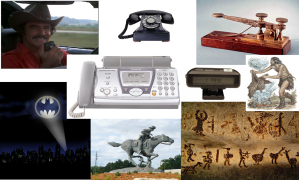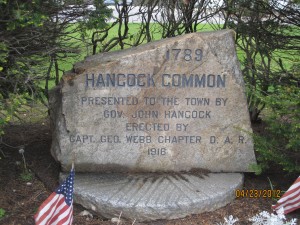As I’m putting the finishing touches on this edition of my blog, severe weather and tornadoes are slamming the Midwest again. I encourage you to go back into some of my previous blogs and read “Tornado Safety” (February 29, 2012) as well as “Using Insurance to Ensure Business Continuity” (January 31, 2012). If you are in an area that is experiencing severe weather, please pay attention to the weather reports and warnings and seek shelter if instructed to do so. And if you aren’t in one of these areas, take advantage of the quite time to make sure your preparedness kit(s) and plans are updated (see below) because you don’t know what lies ahead.
MidAmerica Contingency Planning Forum (MCPF)

This past week has been a highpoint not only for me but for the MidAmerica Contingency Planning Forum (MCPF). The MCPF is a business continuity professional organization I co-founded here in St. Louis over 14 years ago. This past week we finally brought our website up live (www.mcpf.us). The project was led by our Vice President and the Board rallied behind him. It’s been a great team effort! I invite you to take a look at our new site. Over the next few months we’ll be using our website to add value for our members as well as to promote the organization. Also, for those of you that have a profile on LinkedIn, the MCPF has a LinkedIn group page as well and I would encourage you to join our group and get active in the discussions.
Millersville University
This week I had the chance to be the featured presenter on a webinar that was hosted by Millersville University. The Center for Disaster Research and Education at Millersville University sponsors a virtual seminar series for the University and larger community. The Center houses a minor program in Environmental Hazards and Emergency Management and a master’s program in Emergency Management. The seminars are mainly for the students and faculty in these programs in addition to the larger University community. The sessions are live sessions online which then are later made available as podcasts.
One of my former students attends Millersville and is a graduate assistant there. She invited me to speak on a subject of my choice (sometimes that can be dangerous). My presentation was titled “Business Continuity and Preparedness through Social Media”. I thought I’d share some of my presentation with you in this blog. If you want to see a copy of the PowerPoint slides, visit my LinkedIn profile where I posted a copy on Slide Share.
It’s All Communication

From the beginning of time we have been communicating … or at least trying to. Forget the men vs women issue; that’s an entirely separate blog! In its earliest forms, communication was in the form of cave drawings. As “technology” began to develop ancient civilizations began writing on parchment in the form of scrolls. Jumping ahead in time the telegraph came into being and then the telephone which in turn brought about facsimile (fax) machines. And let’s not forget about pagers and cell phones and certainly not the Citizens Band (CB) radios … “Breaker- Breaker good buddy”
Now, add to our “modern” communications the birth and growth of personal computers which in turn brought us e-mail and instant messaging (IM). According to “Email Statistics Report” – THE RADICATI GROUP, 2011-2015, In 2011, the typical corporate email user sends and receives about 105 email messages per day. Furthermore, the report mentions that the number of worldwide email accounts is expected to increase at an average annual growth rate of 7% over the next four years. As far as IM is concerned, in 2011, the number of worldwide IM accounts was estimated to be nearly 2.6 billion and expected to realize an average annual growth rate of 11%.
Social Media
So what is “Social Media”? Basically, it’s communication that uses both web-based and mobile technologies (ie smart phones). It’s communication that has a one-to-many relationship in that one person can send out a “message” to many people and subsequently engage in two-way dialogue. A great analogy I read once said, think of regular media as a one-way street where you can read a newspaper or listen to a report on television, but you have very limited ability to give your thoughts on the matter. Social media, on the other hand, is a two-way street that gives you the ability to communicate too.
In 2011, the total number of worldwide social networking accounts, including both consumer and corporate accounts, was nearly 2.4 billion (Facebook alone has an estimated 845 million monthly active users) and this figure (2.4B) is expected to grow to nearly 3.9 billion by year-end 2015. Let’s face it … Social Media is here to stay.
Using Social Media in Disasters
Let’s look at some examples of how social media has been used in past disasters:
- Japan earthquake/tsunami – Ushahidi was used to create the largest crisis map to date with over 8,000 reports received via social media about shelters, food stores, cell phone charging centers and road closures.
- Joplin tornado – a hospital administrator tasked one woman — who had little more than a Facebook account — to track down 1,100 hospital employees who were missing. A few days later, all 1,100 had been located through the Internet.The Red Cross tweets Location of shelters and how to care for pets during the emergency
- Dramatic scenes of the US Airways plane that crashed into the Hudson River were first seen on Twitter
- When a gunman opened fire in a Soldier Readiness Center, Twitter was able to provide news and updates to the public as well as soldiers around the world!
The Challenge
In a recent Computerworld article it was noted that in a Federal Bureau of Investigation (FBI) Request For Information (RFI) the bureau claimed that “social media” networks have been trumping police, firefighters and news media when it comes to communicating news of developing incidents and protests. They also stated “Social media is rivaling 911 services in crisis response and reporting,”
In a crisis, social media can provide huge quantities of data about an unfolding event. To be useful, the data has to be analyzed, in near real time, and that analysis has to be accurate and presented to the right people (decision makers) who can act on it quickly. Social media analytics, text analytics and sentiment analysis are all very applicable to help with this analysis.
How much data? According to WordPress, its system powers over 68 million blogs worldwide, with 500,000 new posts and 400,000 new comments generated on an average day. Facebook reported it has more than 800 million active users, who upload more than 250 million photos daily. YouTube stated that 100 million people “like,” share or comment on something on the site every week. Twitter’s chief executive officer revealed that the social network had over 100 million active users worldwide, and the company said it was processing 250 million Tweets a day.
Social media is constantly changing and constantly moving. So how do we stay ahead of the game, instead of always being behind it? Part of the challenge lies in the nature of social media itself. As a self-generated means of communication, social media is an excellent resource for real-time information on disasters. But the sheer volume of news and events created immediately after an event poses a huge challenge for emergency responders trying to monitor the aftermath. The instantaneous nature of social media had built up enormous expectations for a speedy response. The real strength of social media, it seems, lies in both preparation for these events; like warnings and information, including evacuation notices, weather updates and lists of resources, and after the event such as where to get help.
Considerations
- Organizations should have a Social Media policy in place that clearly defines acceptable social media practices.
- Organizations should only use social media tools that can contribute to the success of their social media campaigns.
- They should only use tools they have the time to plan and execute the use of.
- Organizations should have a plan for their messages and make those messages clear and coherent.
- Delegate social media tasks only to people in the organization who are aware of the organization’s communication strategies.
- Social media should not be treated as a “low-level task”. It should be viewed as a strategic communications tool
- Social media is more than a “new” place to communicate during a disaster/emergency, it really is “THE” place to communicate
Let me close by saying I’ll be back on the road again. Watch soon for new blogs from Worcester, Massachusetts and then Austin, Texas. In the meantime continue getting prepared ….
Getting Prepared In a Year
Well, let’s continue on with our preparedness activities. Here’s what you can do now to add to your preparedness kit – and we’ll focus on first-aid.
The following should be in your first-aid kit:
- Aspirin and/or acetaminophen
- Compresses
- Rolls of gauze and/or bandages
- First-aid tape
- Adhesive bandages – assorted sizes
- Also, extra hearing aid batteries (if needed)
Things To Do:
Check with your child’s day care or school to find out about their disaster plans.






